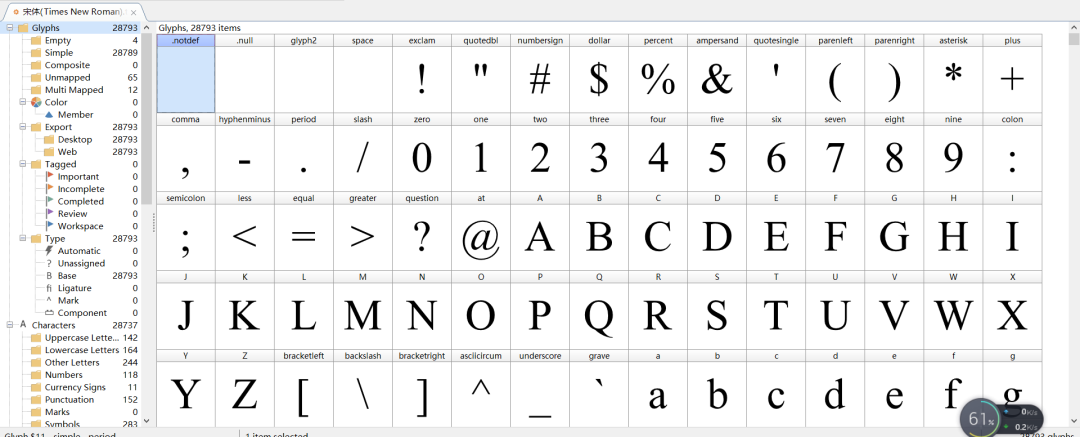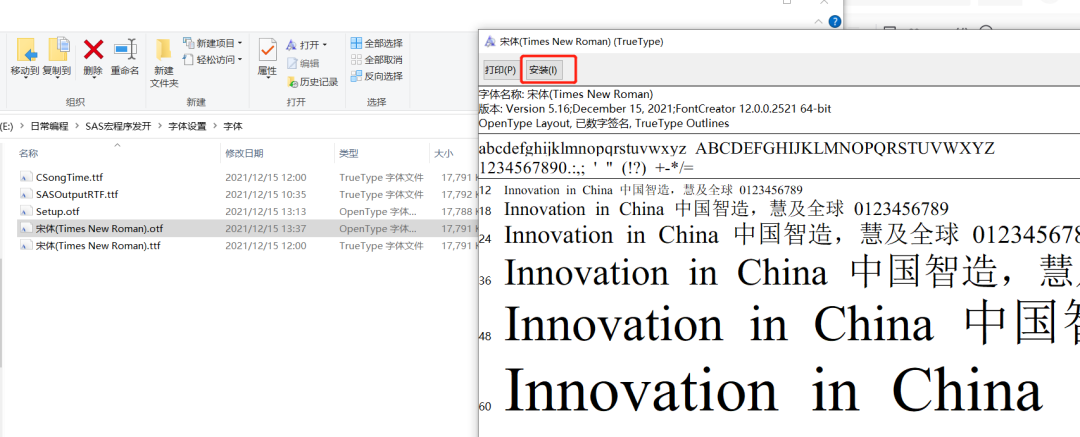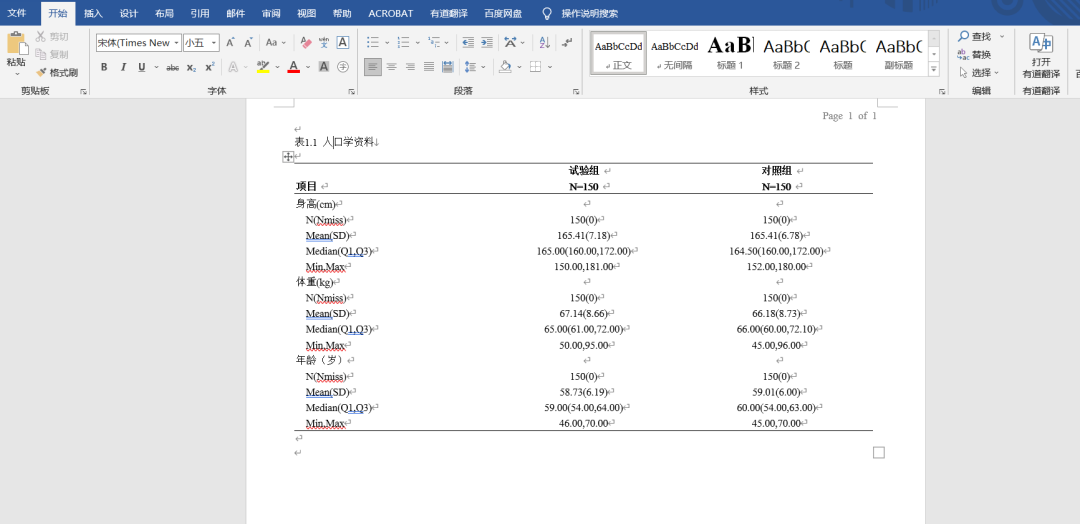Xiaobian today to share how SAS output RTF realizes font freedom. This paper will mainly introduce the implementation method of SAS output RTF to realize "Chinese Song typeface, English Times New Roman". Before that, let's share the solution to the invalidation of the "Tahoma" setting.
Set "Tahoma" invalid
In Style, the font is set to "Arial", but the final output font is "isocline". In fact, this problem is also well solved. We can replace "Arial" with "simsun".

Set Style in Proc Template
Chinese "Song Ti", English "new Rome"
As for how to realize font freedom, I will take how to realize "Chinese song style, English new Rome" as an example. There are many such questions on the Internet, but they are often fruitless or impossible to achieve. The implementation idea of small editing is mainly divided into three steps ([custom font] - [install and import font] - [set font and output]). In fact, with the idea, the implementation is really simple.
Custom font
As a programmer, logical thinking is very important. Since the existing fonts can not meet our needs, in fact, we can define or create the fonts we need. You can find some free font editors on the Internet that can be used to create fonts. Xiaobian replaced letters / numbers / symbols with a new roman font based on the existing Song typeface, so a custom font came into being. Xiaobian named it "Times New Roman".

style editor
Install / import fonts
Install the custom font on the computer (probably Xiaobian. The essence of the custom font here is the combination of "song style" and "Times New Roman", which can be displayed normally even if the custom font is not installed on other computers), and then import it into SAS.
install font

Double click to open the font and click Install
Import SAS
/*Write the font to the SAS registry, and fill in the path where the font is located in fontpath*/ proc fontreg mode=all ; fontpath 'E:\Daily programming\SAS Macro program launch\Font settings\typeface'; run;
Set output
Finally, you can set the Proc template and ODS output.
proc template;
define style tp_rtf;
parent = styles.rtf;
replace fonts /
"TitleFont2" = ("Song typeface(Times New Roman)",9pt)
"TitleFont" = ("Song typeface(Times New Roman)",9pt)
"StrongFont" = ("Song typeface(Times New Roman)",9pt,Bold)
"EmphasisFont" = ("Song typeface(Times New Roman)",9pt,Italic)
"FixedEmphasisFont" = ("Song typeface(Times New Roman)",9pt,Italic)
"FixedStrongFont" = ("Song typeface(Times New Roman)",9pt)
"FixedHeadingFont" = ("Song typeface(Times New Roman)",10pt)
"BatchFixedFont" = ("Song typeface(Times New Roman)",10pt)
"FixedFont" = ("Song typeface(Times New Roman)",9pt)
"headingEmphasisFont" = ("Song typeface(Times New Roman)",10pt,Bold Italic)
"headingFont" = ("Song typeface(Times New Roman)",10pt,Bold)
"docFont" = ("Song typeface(Times New Roman)",9pt);
replace Header from HeadersandFooters / font = ("Song typeface(Times New Roman)", 9pt, medium)
background = _undef_
protectspecialchars = off;
replace table from output / font = ("Song typeface(Times New Roman)", 9pt, medium)
background = _undef_
frame = void
rules = none
cellspacing = 0.5pt
cellpadding = 1pt
outputwidth = 100%;;
replace cell from output /
font = ("Song typeface(Times New Roman)", 9pt, medium) ;
*Define header;
style header /
backgroundcolor=white
color=black
fontweight=bold;
*Define the layout of the file;
style body from document /
bottommargin = 15mm
topmargin = 15mm
rightmargin = 15mm
leftmargin = 15 mm;
end;
run;Result display

Double result display
summary
I believe that after reading the above, it is a very simple thing to realize font freedom.